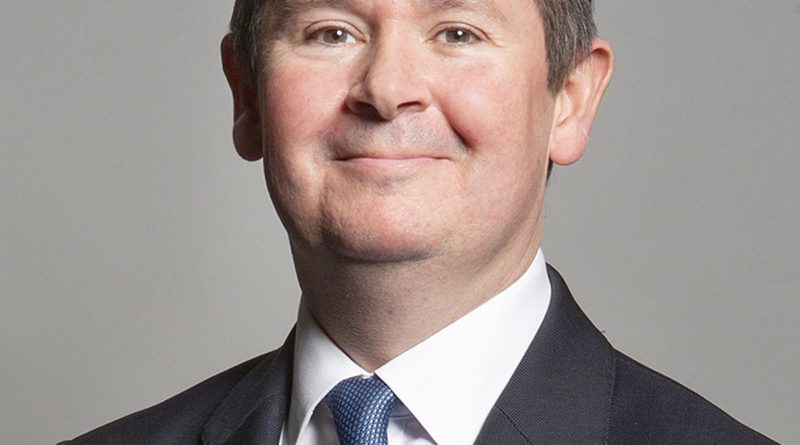David Simmonds – 2022 Speech on Early Years Childcare and Staff-Child Ratios
The speech made by David Simmonds, the Conservative MP for Ruislip, Northwood and Pinner, in Westminster Hall, the House of Commons, on 14 November 2022.
It is a pleasure to serve with you in the Chair, Ms Harris. I offer my condolences to Mr and Mrs Steeper. I hope that one of the messages from today’s debate will be a recognition that there are many Members of Parliament, including myself, who are parents of very young children and recognise that story as the ultimate nightmare for any parent, and who are therefore committed to helping the Government find a way to address the issue constructively.
I will set out a bit of the context that I learned about during my time in local government as the lead member for children’s services. I hope to offer the Minister some constructive suggestions about how the Government might take forward some of the issues raised in the consultation, in the petition and in today’s debate.
The guidance on staff-to-child ratios stems from the Children Act. The primary purpose of that legislation and that guidance is managing risk. We need to be cautious about the idea that a ratio of 1:4 equals safe, but 1:5 equals dangerous. Research from the Thomas Coram Research Institute at the Institute of Education highlights that the way in which the ratio is calculated varies quite a lot. Some nurseries do it by dividing the total number of full-time equivalent staff by the number of children on roll; others by the number of staff on shift at a given time, divided by the number of children in attendance at that time; and others based on inspection of how many staff members are visible in a particular space compared with the number of children at a given moment. They are all valid ways of calculating the ratio, but give significantly different variations in the numbers of adults and children who are physically present.
There is a world of difference between some of the staff I met at my children’s nursery—which was provided by the London Borough of Hillingdon—who had 30 or 40 years’ experience in childcare and had been on every conceivable training course from paediatric resuscitation and emergency treatment to handling various complex medical conditions, and those who may be doing their first day on the job as a child carer; and many Members have highlighted that point today. Ministers from all parties have been under pressure for many years to make the money go further, but it is right that they consider that context as they look at the issue. This is not as exact a science as some would like to think. Our key approach must be to manage the risks that occur in these kinds of settings, so that children are as safe as possible.
The hon. Member for Newcastle upon Tyne North (Catherine McKinnell) clearly made the point—it is borne out well by the research—that the money that we spend on the early years has the most impact on a child’s outcomes of the money that we spend at any stage of education. When we look at how the funding formula is distributed nationally, it is the opposite way around. We spend most money on the GCSE years, when it has comparatively less impact and benefit for a child; and, relatively speaking, less is spent on support for early years. The data held by the Children’s Commissioner—produced by data expert Leon Feinstein—highlights that we can predict a child’s A-level results based on their attainment in the early years foundation stage. We have good evidence that this is not merely a matter of supposition, but that there is a direct correlation between the impact of early education and a child’s outcomes when they start adulthood.
As we consider possible solutions, the Government must be commended for the fact that, for the first time, we have a comprehensive early years national funding formula, which was introduced in 2017. It seeks to bridge the gap between the day-to-day realities of nursery life in a complex sector—we have private, voluntary and independent providers, as well as the statutory sector in the form of school nurseries—and the desire to ensure that parents generally, but especially women, are able to return to the workforce because affordable childcare is available.
Three elements make up the national funding formula. There is the universal base rate, which is a figure that is determined nationally; that will be challenging, because it is the biggest part of the formula for the Government to look at. There is also an additional needs factor, which reflects the requirements of children with special educational needs and disabilities, and the area cost adjustment, which is designed to take into account the differential cost of providing nursery care in different parts of the country.
As a Member of Parliament representing an outer London constituency, I hear daily from businesses generally, and from nursery providers in particular, that the remarkably high costs of employment make it difficult to recruit and retain the qualified staff they require. Although I recognise the financial challenges facing the Government, if they have an opportunity to look at doing something with the area cost adjustment, I suspect it would make the lives of all Members of Parliament easier when it comes to ensuring that their local nursery and childminder sectors are properly supported. That would be enormously helpful.
It is clear that the way in which the funding is distributed—in particular, the role of early years representatives at schools forums where decisions are made about dividing up that funding—could be strengthened. The fragmentation of a sector with large numbers of quite small providers means that compared to big secondary schools, for example, it is hard to get people at the table who are real experts in the way that the funding can be distributed. If we can do that much more effectively, the flexibility that exists in the remit of those schools forums would enable a greater degree of support and local nuance to reflect the particular challenges that a community faces in the distribution of funding, especially when it comes to the creation of new provision in response to emerging needs.
The Government have done a great deal with policies such as tax-free childcare and the early years pupil premium to put additional resource into the sector to reflect the complexity of children’s needs, although there are more opportunities that are about not just additional resources—strong though the case for them is—but the way in which the money is distributed. Rather than having to consider easing childcare ratios as a way of making the budget go further, we can ensure that the money that is already contained in the early years national funding formula finds its way more effectively and flexibly through the system to support the sector to do the outstanding job we all want to see it do for all our children.



